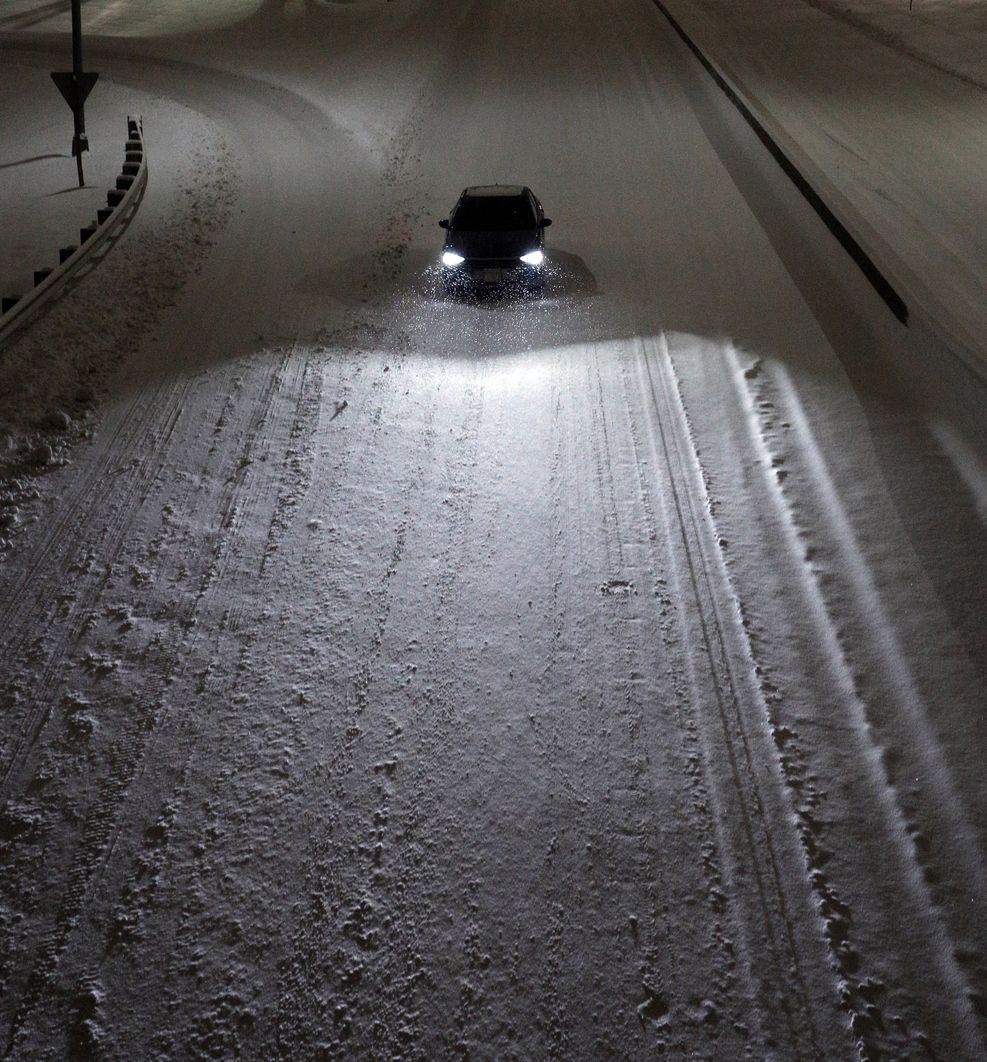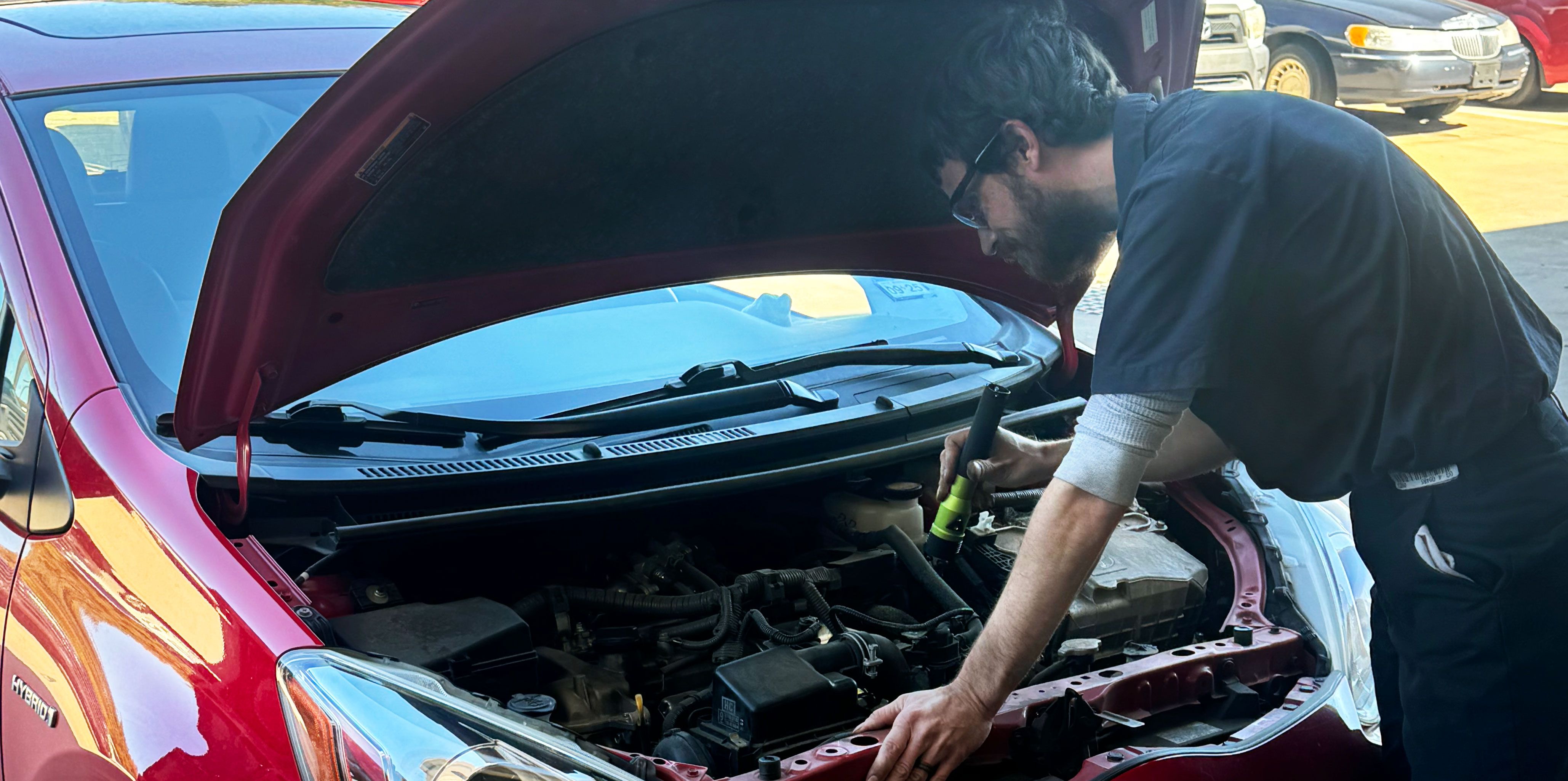When the winter winds start to howl and snow blankets the roads, the age-old question resurfaces: What drivetrain is best for snow? Whether you’re navigating city streets or tackling backcountry trails, a vehicle’s wheel drive can significantly impact your winter driving experience.
In this guide, we’ll explore the merits and drawbacks of the four primary drivetrains — rear-wheel drive (RWD), front-wheel drive (FWD), all-wheel drive (AWD), and four-wheel drive (4WD) — in snowy conditions. And if you find out that your drivetrain isn’t ideal for the snow, don’t fret — read on to learn how to optimize your vehicle for winter performance! Hint: it’s all about your tires.
Rear-Wheel Drive (RWD)
You’ve probably heard of RWD — after all, it was the most common type of drivetrain until the end of the 20th century. As you may have guessed, engine power in a RWD vehicle is sent only to the rear wheels.
Though RWD was once standard for most vehicles, nowadays, this configuration is often found in pick-up trucks, sports vehicles, and performance cars. Since the front wheels aren’t powered, this type of drivetrain can offer excellent steering and cornering in dry conditions. When things get rainy or slippery, however, RWD vehicles can lose traction. And in winter conditions, RWD cars can dig a hole for themselves and get stuck in the snow.
Is Rear-Wheel Drive Good For Snow?
Front engine RWD vehicles — especially light trucks — can make winter driving difficult. In the snow, RWD vehicles may be more likely to slide out, have difficulty gaining traction from a stop, and “push” you down the road (i.e., fail to turn). That said, driving a RWD vehicle on snow or ice is not impossible (or even impractical) — especially if you add weight to the rear and follow our RWD winter driving guide.
Front-Wheel Drive (FWD)
FWD drivetrains are commonly found in everyday sedans and compact cars. They deliver power only to the front wheels, which can help improve traction in various driving conditions. When it comes to handling winter weather, FWD may not be the absolute best option, but it has some advantages.
Can You Drive in Snow with FWD?
So, is front-wheel drive good in snow? It may not be the worst choice of drivetrain for winter — especially if you follow our winter driving tips. Compared to their RWD counterparts, FWD systems can offer better traction on snow or ice.
Whereas RWD vehicles “push” themselves down the road, FWD cars “pull” themselves down the road. FWD cars with their engines in the front may also have increased traction from a stop. However, FWD vehicles may struggle in off-road or extreme winter conditions where power to all four wheels is essential — which leads us to our next drivetrain type: AWD.
All-Wheel Drive (AWD)
AWD has become increasingly popular for its versatility, offering power to all four wheels as needed. It strikes a balance between FWD and RWD, making it a solid choice for diverse driving conditions. Whereas RWD does well in dry conditions and FWD does decently in wet/snowy conditions, AWD can handle both without sacrificing performance in either area. How? AWD systems use sensors and engineering logic to more effectively distribute power — a feature that helps maximize performance and reduce the stress of staying on the road for the driver.
Is an All-Wheel Drive Good In The Snow?
AWD is potentially the best option for snowy driving conditions. Because AWD systems can both “push” and “pull” your vehicle, cornering abilities, traction, and general handling normally increase. This applies to any condition — dry, wet, and even snowy/icy. When a deep pocket of snow or a slick patch of ice causes a tire to lose traction, AWD simply optimizes power for the other tires to get over it. For this reason, AWD is often found in high-performance and luxury vehicles.
Four-Wheel Drive (4WD)
You might be thinking, “Wait, isn’t 4WD the same as AWD?” Not quite — though both AWD and 4WD deliver power to all four wheels, there are some key differences between the two. Whereas AWD automatically and consistently delivers power to all of the wheels, 4WD generally has a switch or gear-shift you can activate that splits power on demand when more traction is needed. While this can be less efficient and not for use on dry, paved roads, this feature can be extraordinarily useful when towing heavy loads off-road, plowing through deep snow, or traversing off-road conditions.
Is 4WD Good In The Snow?
Also called 4x4, 4WD vehicles often come in the form of rugged SUVs and trucks, which can be a great choice for extreme winter conditions. Because 4WD can deliver power to all four wheels, it can help provide the “oomph” needed to escape snowdrifts or climb icy inclines. However, unlike AWD vehicles, most 4x4s require 4WD to be manually activated under limited conditions, which may require more focus from the driver — though active drivers may consider this a pleasant benefit.
Do I Need Winter Tires If I Have AWD or 4WD?
No matter your drivetrain, the key to optimal winter performance lies in the tires you choose for your ride. Winter tires designed specifically for snowy conditions are likely to give you improved traction, shorter stopping distances, and better handling in cold temperatures.
If you want to dominate winter roads, we recommend Bridgestone Blizzak Tires, which boast features ideal for winter conditions. With Nanopro-Tech™ and RC Polymer technologies that work in unison to prevent slipping and sliding in rough winter conditions and 3D zig-zag sipes that grip snowy roads, you can enjoy confident and comfortable handling in the harshest of conditions.
No Matter What Your Drivetrain Is, Firestone Complete Auto Care Can Help You Stay on The Road
Choosing the right tires for your vehicle and weather conditions is essential for your ride, regardless of your drivetrain type. Visit your local Firestone Complete Auto Care, and our professional technicians can help you make the right decision for your area, car, and budget. Schedule your tire appointment today!



